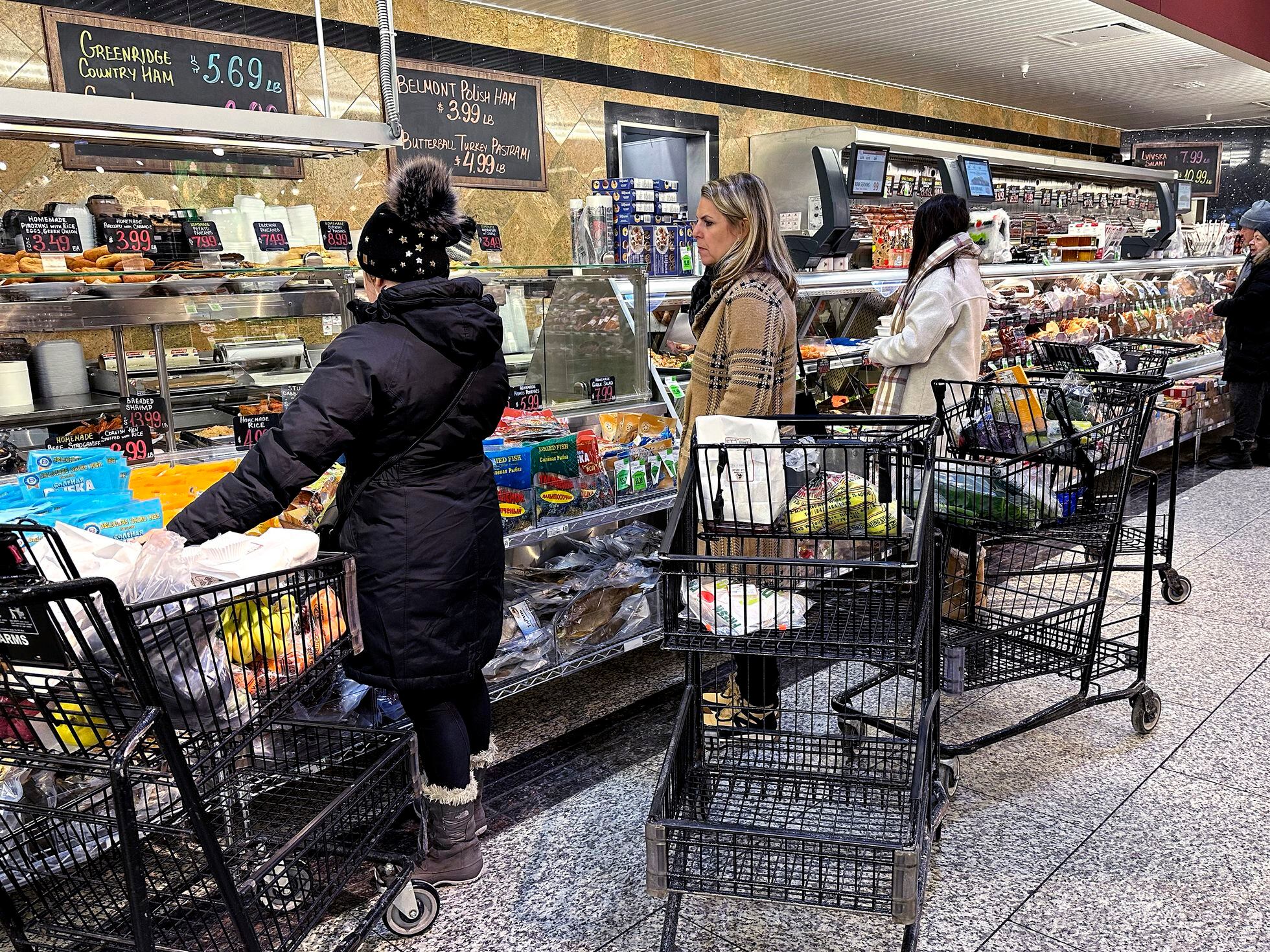
The Federal Reserve’s preferred gauge of underlying inflation cooled to an almost three-year low even with robust holiday spending, keeping the debate alive over whether officials will soon cut borrowing costs.
The so-called core personal consumption expenditures price index, which strips out the volatile food and energy components, increased 2.9% in December from a year earlier, according to the Bureau of Economic Analysis. From a month ago, it advanced 0.2%.
Inflation-adjusted consumer spending climbed 0.5% in December for a second month, the biggest back-to-back increase in nearly a year. That was fueled by another strong advance in wages and salaries.
Friday’s report caps a year that saw inflation retreat at a much faster rate than the Fed and Wall Street economists anticipated, all while a sturdy job market kept powering consumer spending. While some of that momentum is expected to moderate this year, many forecasters still see the economy dodging a recession.
Even so, Fed officials have been cautious to declare victory on inflation and have said they want to see sustainable signs of cooling before lowering borrowing costs. While they’ve started to discuss such a move, policymakers are expected to keep interest rates at a two-decade high when they meet next week.
Treasury yields rose, S&P 500 index futures fell and the dollar remained lower. Traders maintained bets on about a 50% chance that the Fed will start cutting rates in March.
By some measures, the Fed has already achieved its inflation goal. Core PCE inflation, on a six-month annualized basis, registered at 1.9% in December, trailing the Fed’s 2% target for a second month.
“Evidence continues to pile up that the Fed has met its inflation goal,” which will make it harder for officials to hold off on cutting rates until midyear, said Derek Tang, an economist with LH Meyer/Monetary Policy Analytics.
What Bloomberg Economics Says…
“The stage is set for the Fed to take steps toward cutting rates and tapering the pace of Quantitative Tightening (QT) in coming months. We expect the Fed to begin lowering the federal funds rate target range in March as it attempts to stick a soft landing.”
— Stuart Paul and Estelle Ou. To read the full note, click here
Policymakers pay close attention to services inflation excluding housing and energy, which tends to be more sticky. That metric slowed to a 3.3% pace from a year earlier, the softest since early 2021.
Separate data out Thursday showed economic growth trounced forecasts, fueled in part by strong consumer spending at the end of the year. That suggests the momentum can carry over into the new year, said Michael Pearce, lead US economist at Oxford Economics.
“The strong gain in spending in December shows that consumer spending entered 2024 with momentum and suggests that consumption growth is on track for another strong gain in Q1,” Pearce said in a note to clients following the release.
Spending Breakdown
Friday’s report showed spending last month was driven by outlays for durable goods like recreational goods and vehicles. On an inflation-adjusted basis, outlays for goods climbed 1.1%, the most in nearly a year, the report showed. Services spending slowed somewhat.
Real disposable income, the main supporter of consumer spending, advanced 0.1%, the smallest in three months and held back by weak dividend income. That helped push the saving rate to the lowest in a year.
While economists see high borrowing costs taking a toll on hiring in 2024, data out next week are expected to show US employers added a healthy number of jobs in January. The latest figures on job openings and employment costs are also due in the week.


